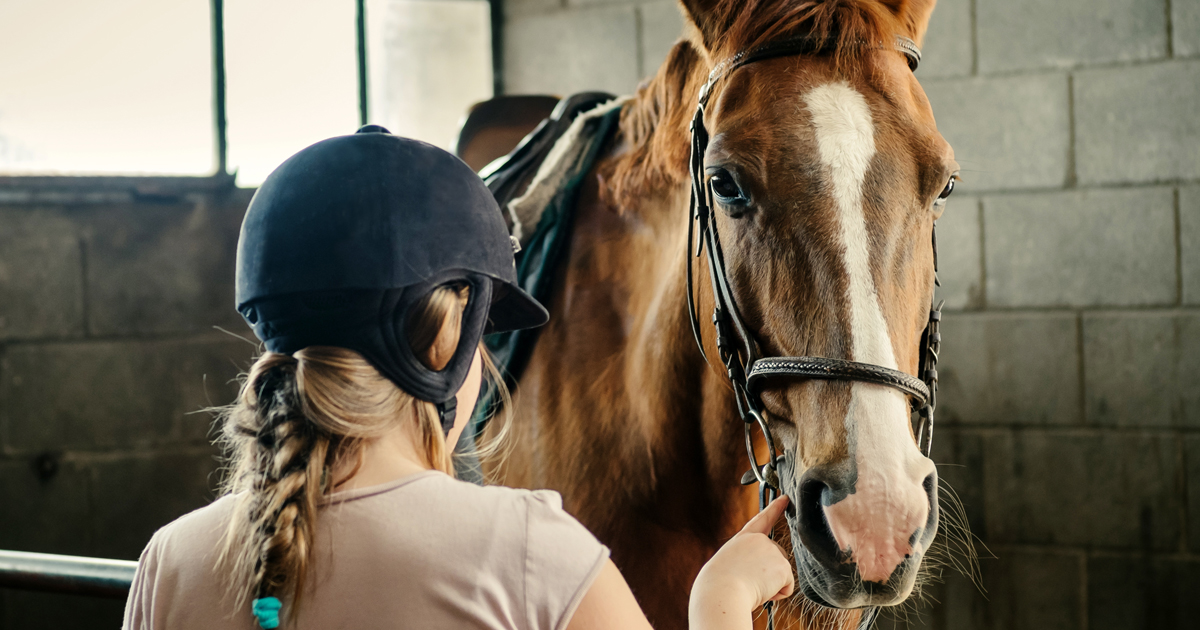Horseback riding, mental exercises improve motor skills in children with autism, ADHD
Researchers reported that horseback riding, combined with mental exercises, positively impacted the motor skills of children and adolescents diagnosed with autism, ADHD and other neurodevelopmental disorders.
It is the first known study among the researchers to demonstrate short- and long-term improvements in motor skill proficiency following therapeutic horseback riding and brain-building activities in this patient population.
Approximately one in six children in the United States have a developmental disability, according to B. Rhett Rigby, PhD, CSPS, NSCA-CPT, co-director of the Institute for Women's Health and associate professor in the School of Health Promotion and Kinesiology at Texas Woman’s University, and colleagues. Therapeutic horseback riding activities, also known as equine-assisted activities (EAA), are used to teach individuals with various disorders and disabilities specific riding skills such as mounting and dismounting to improve their learning abilities. Many centers in the United States that offer EAA are starting to adopt programs that combine EAA with brain-building activities completed off the horse. Before this study, there was no research supporting the efficacy of a combination of EAA with brain-building activities in motor skill improvement among children and adolescents with neurodevelopmental disorders, according to the researchers.

Rigby and colleagues assessed changes in motor skill proficiency among 25 participants aged 5 to 16 years who were diagnosed with a neurodevelopmental disorder and took part in EAA and brain-building activities through the “GaitWay to the Brain” program at ManeGait Therapeutic Horsemanship in McKinney, Texas.
The study lasted 32 weeks. It was broken into four, 8-week time blocks, each with different protocols. The first 8-week block was a control period in which participants did not have horseback riding experiences. The second block consisted of EAA only, during which participants learned about horse anatomy, riding equipment and basic riding activities. The third block was a washout period where participants stopped EAA. During the fourth block, the children participated in the GaitWay program, which consisted of both EAA and cognitive exercises, which included eye-tracking exercises, hand-eye coordination exercises and music therapy.
The participants were tested on their motor skills before and after each block of time (precontrol, post-control, post-EAA, post-washout and post-GaitWay). These tests included strength, fine motor precision and integration, upper-limb coordination and balance, among other motor skills. The caregivers of participants were also asked to report any changes in their child’s motor skills at the post-EAA and post-GaitWay tests.
Seven participants were recruited to participate in the program for an additional year following the primary study. These participants followed many of same procedures as they did in the initial study, and their motor skills were tested an additional time after the year-long program.
According to the study results, participants performed better in manual dexterity, upper-limb coordination and strength tests over the course of the primary study. There were overall higher scores in the post-GaitWay tests compared with the precontrol tests (P = .028). Caregivers also reported improved balance and posture in their children post-EAA and post-GaitWay.
The benefits of EAA and brain-building activities were maintained among participants who continued the interventions for an additional year, according to the researchers. Their caregivers most often reported improvements in coping skills, balance and posture. These participants also showed improvements in social and academic performance, Rigby and colleagues reported.
The researchers speculated that the broad improvements may be due to the nature of equine-assisted therapies, as the participants interacted with their horses on physical, emotional and social levels.
“Our findings should be helpful to therapists and other health care professionals who are tasked with implementing strategies and interventions to improve motor skill proficiency in children and youth with ADHD and [autism spectrum disorder], which were the most common diagnoses in our study,” Rigby said in a press release.
As the prevalence and demonstrated efficacy of combined EAA and brain-building interventions increase, there could be a greater demand for these programs to be recognized by health insurance providers, according to the researchers.
“This may allow for these programs to become more accessible and affordable,” they concluded. – by Kalie VanDewater
Disclosures: The authors report no relevant financial disclosures.
